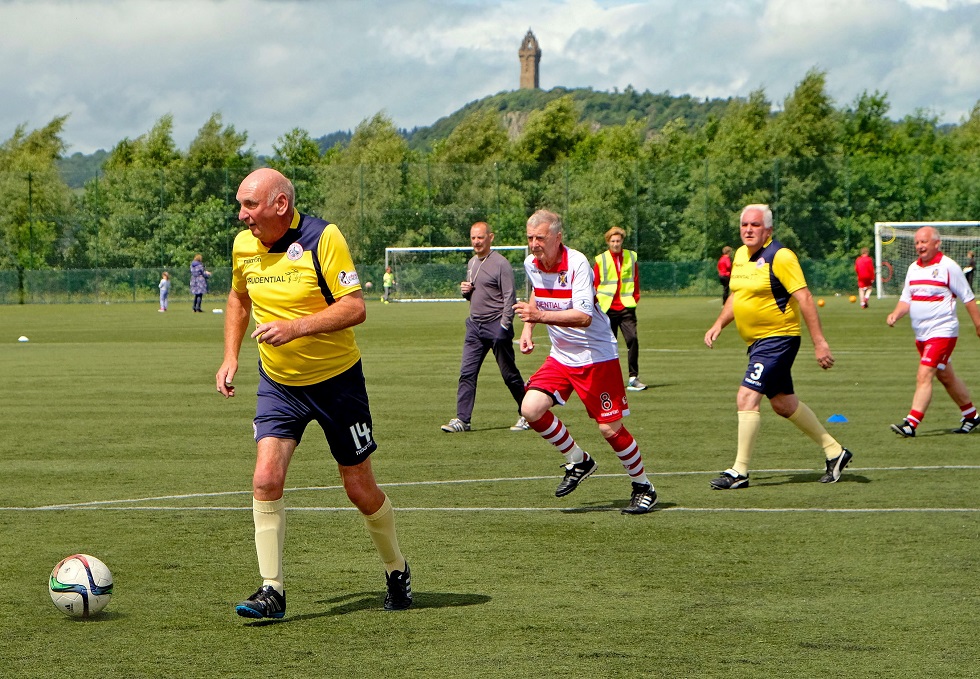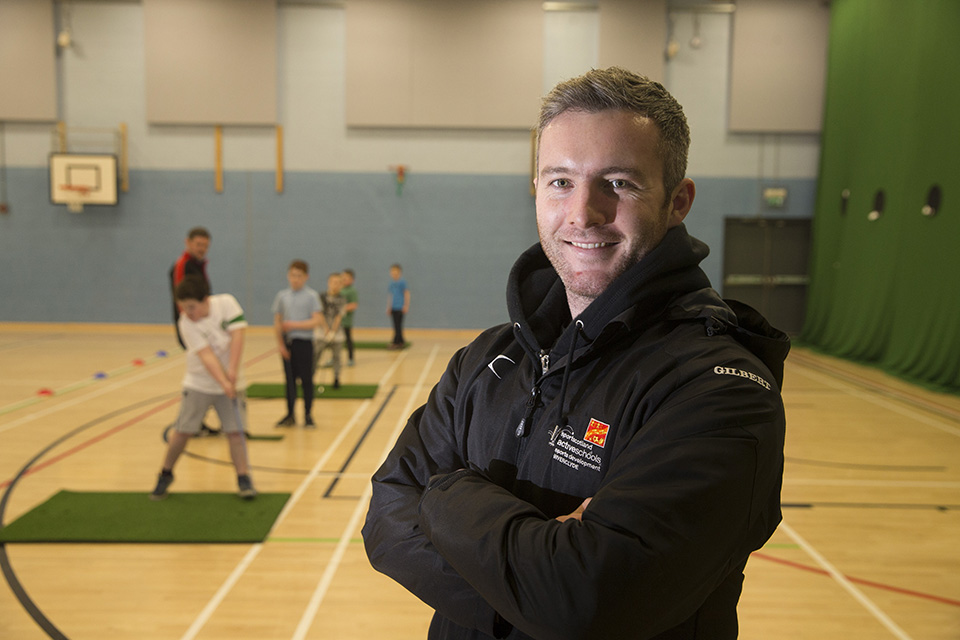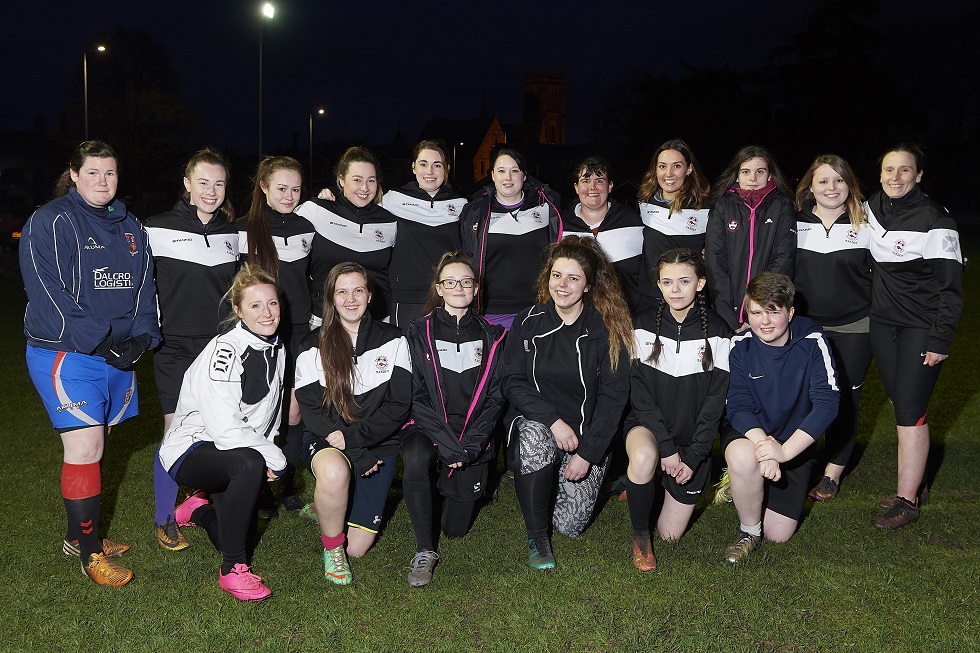Gary McLaughlin was in his mid-40s when he suffered a heart attack. He was in his mid-50s when it happened again.
With eight stents implanted into his heart, Gary not only survived, he found a way to transform his health outlook to the point where, at 58, he now feels fitter and happier than he has for a decade.
The secret to his salvation is walking football.
Walk of life
Walking football was devised in 2011, and the following year it was introduced in Scotland.
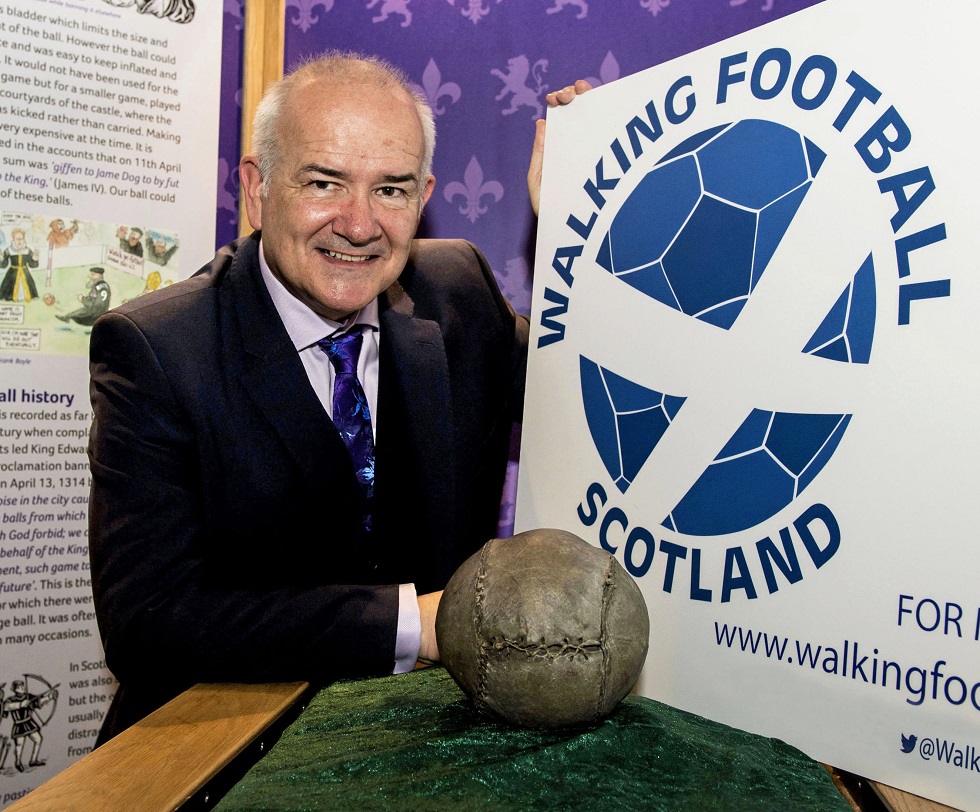 It has grown rapidly thanks to the formation of a governing body, Walking Football Scotland (WFS), under the umbrella of the Scottish Football Association, and today there are more than 2,000 people in Scotland playing regularly
It has grown rapidly thanks to the formation of a governing body, Walking Football Scotland (WFS), under the umbrella of the Scottish Football Association, and today there are more than 2,000 people in Scotland playing regularly
One of them is Gary McLaughlin.
“After my second heart attack, I was obviously a bit worried about my health and my life in general,” says Gary. “The consultant explained to me that the heart is a muscle and it needs exercise.
“I had played a lot of football in my younger years and my wife Elizabeth encouraged me to go out and get active again. I’m not a line dancer, so that sort of thing didn’t appeal to me, but Elizabeth was involved with the Ayr United FC academy and she and David Watson from the academy tried to talk me into trying out something called walking football.
“My perception of walking football was that it was for old men, and I didn’t fancy it. But I went along and gave it a go, and that was a decision that absolutely life-changing for me.
“I’m fitter and stronger than I was 10 years ago.”
Good health
Gary is now Chairman of WFS and a passionate advocate of a sport which brings a multitude of health and wellbeing benefits to participants, across mental and physical health.
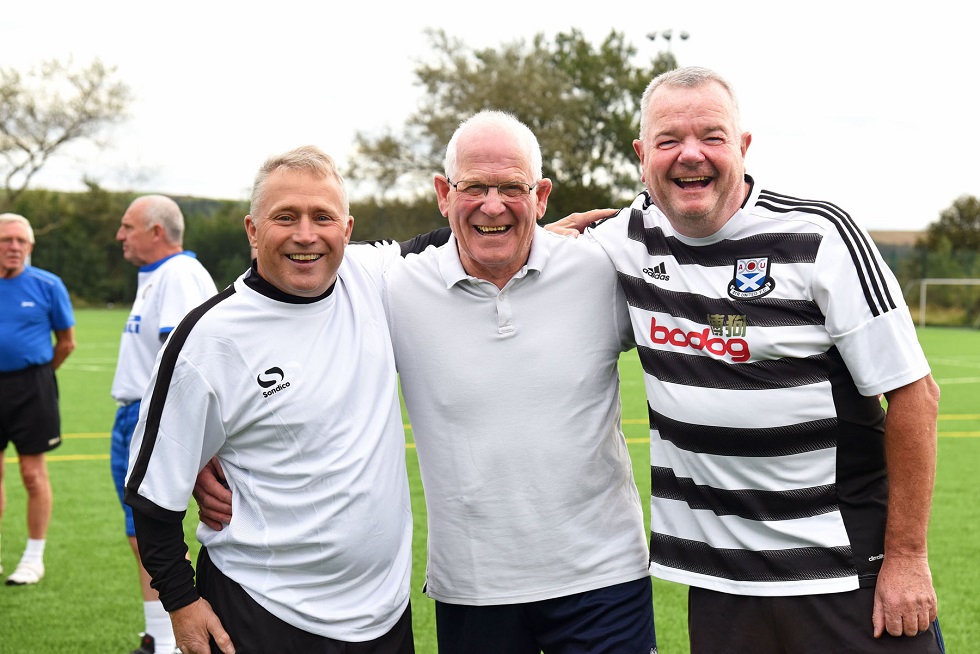 “In my experience, I could feel the physical benefits around cardiovascular health straight away. A few years ago I was struggling to put on my own socks, and the strength that has come back through my involvement in walking football, and the confidence, is just incredible.
“In my experience, I could feel the physical benefits around cardiovascular health straight away. A few years ago I was struggling to put on my own socks, and the strength that has come back through my involvement in walking football, and the confidence, is just incredible.
“I’ve met so many people through the game and all the things I enjoyed about playing football in my youth have come back to me – the banter in the dressing room is great.
“I see other guys who are not as fortunate as myself, who have mental health issues, and the way they are able to reconnect to people shows that the benefits are social as well as physical.”
On the up
John Brown is the SFA’s South West Regional Manager and, like Gary, has witnessed up close the rapid growth in popularity of a sport that has benefited from patronage from Scottish football legends Craig Brown and Rose Reilly.
“Over the last four years in Scotland walking football has grown massively to the point where we have nearly 2,000 players,” says John.
“The game is being played in 31 of the 32 local authorities, even in the Western Isles. There is a strong community around Ayr United, where there are four different groups, and Hearts have a similar set-up in Edinburgh.
“Walking Football Scotland was formed with help from Paths4All, the Scottish Government and Age Scotland and the organisation now oversees this more leisurely derivative of our national sport in partnership with the Scottish FA.
“A set of rules and regulations has been agreed this year for competition play. There are different levels of physical activity in the various groups, but there are so many benefits for everyone who plays.
“Some people have even recorded their steps and found that they cover more ground in a walking football match than in traditional five-a-sides.”
A sport for all
Walking football is generally contested between teams of nine or ten players. Any player who breaks out into a run concedes a free-kick. Slide tackles are also penalised, thereby limiting the potential for injury.
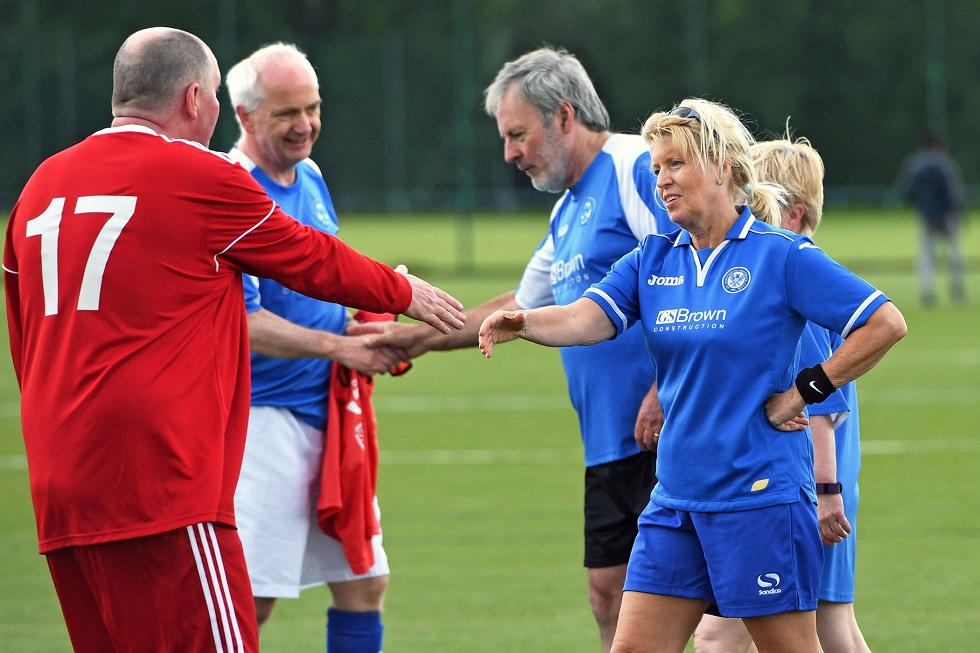 Participation is the fundamental goal, but there is a competitive side to the game that has been embraced by a number of Scots who have competed in – and won – global tournaments.
Participation is the fundamental goal, but there is a competitive side to the game that has been embraced by a number of Scots who have competed in – and won – global tournaments.
There are currently 72 established groups in Scotland and many of them will come together at Glasgow Green on 23 June for the WFS Cup, where almost 600 players will be involved.
The Minister for Public Health and Sport, Aileen Campbell MSP, is due to attend.
“There are a lot of men playing the game but we are now noticing a burgeoning growth in numbers of women becoming involved,” says John Brown.
“A lot of the players are retired and for them walking football is a social event. For some people the cup of tea and biscuit at the end is as important as the game.
“WFS have linked up with the mental health charity SAMH who recognise the benefits in wellbeing for the senior players involved and there have been partnerships established with health boards across the country.
“Our para-football coordinator, David McArdle, is involved in growing the game and making people aware that anyone can get involved, no matter their age or their ability. We have some ex-professionals playing alongside others who have never played football at all.
“Some players even follow the game around the country and play in different locations because they love it so much.”
Find out more
Visit the WFS website or the walking football section of the Scottish FA website.


